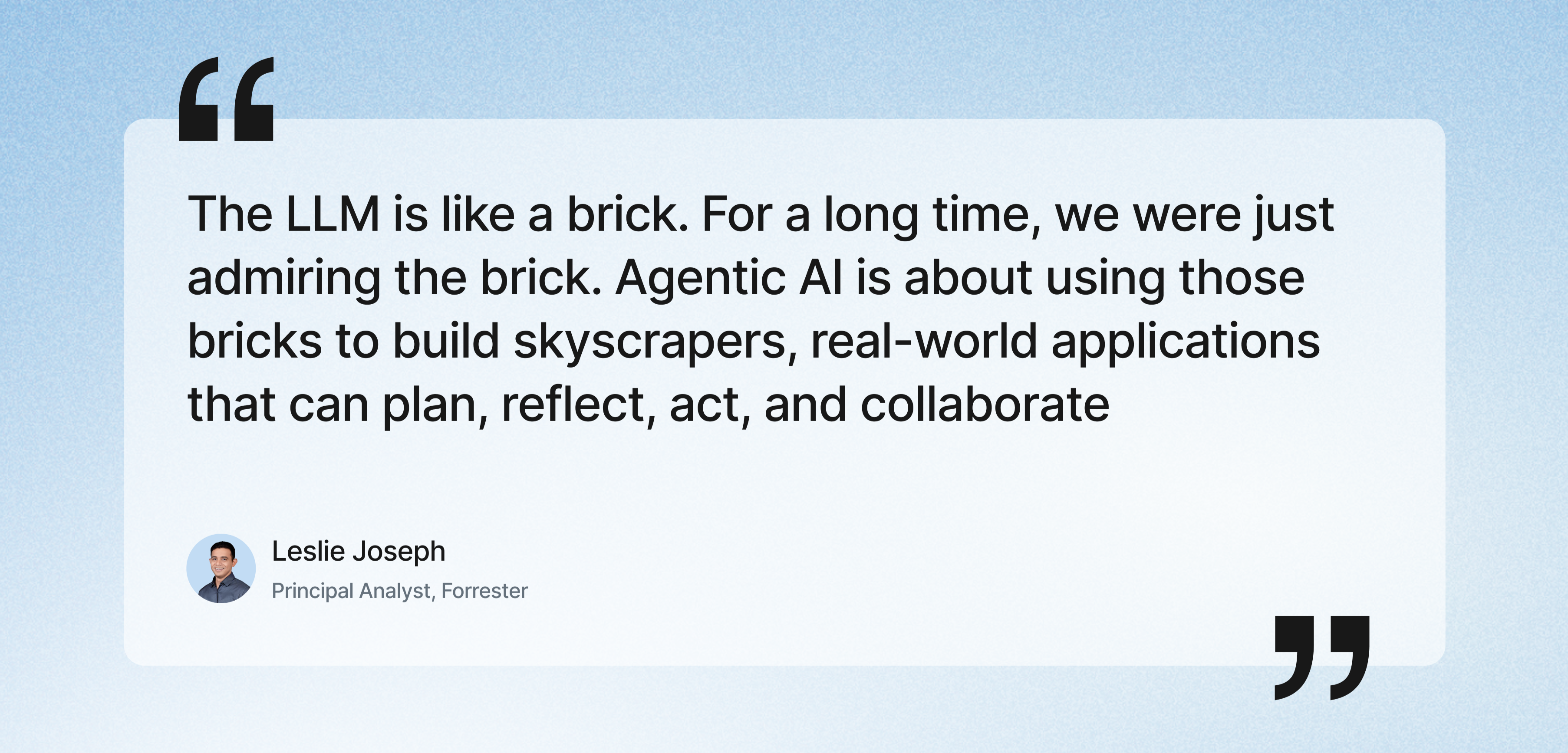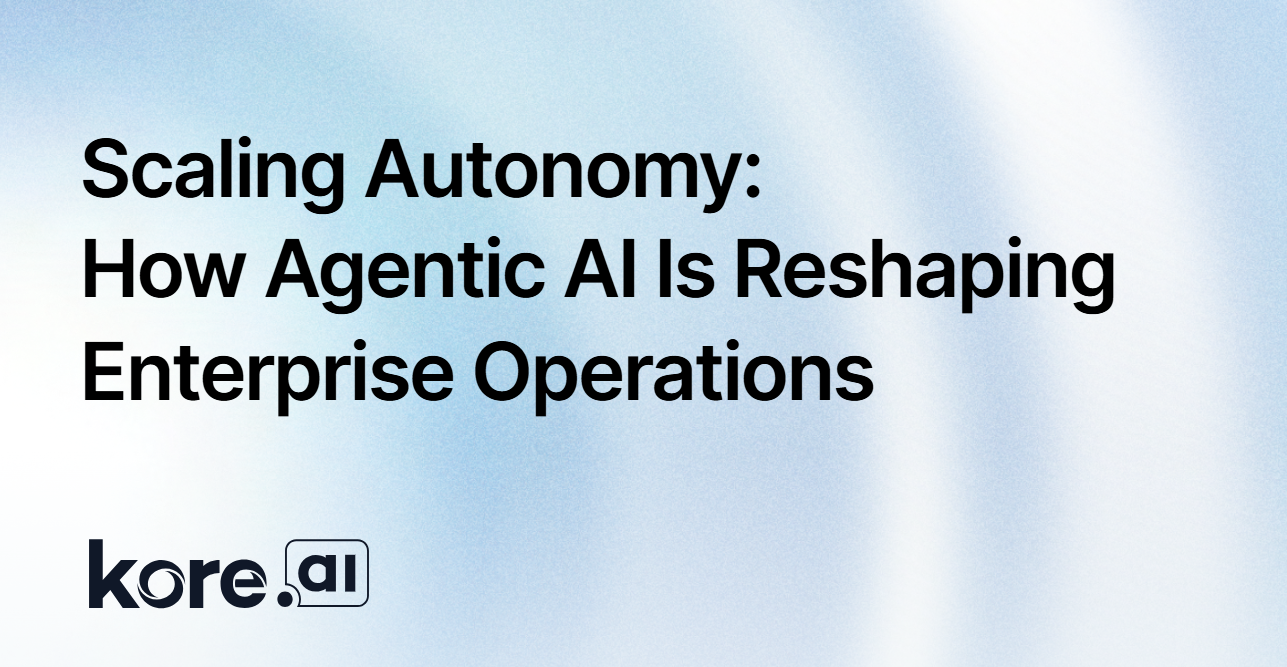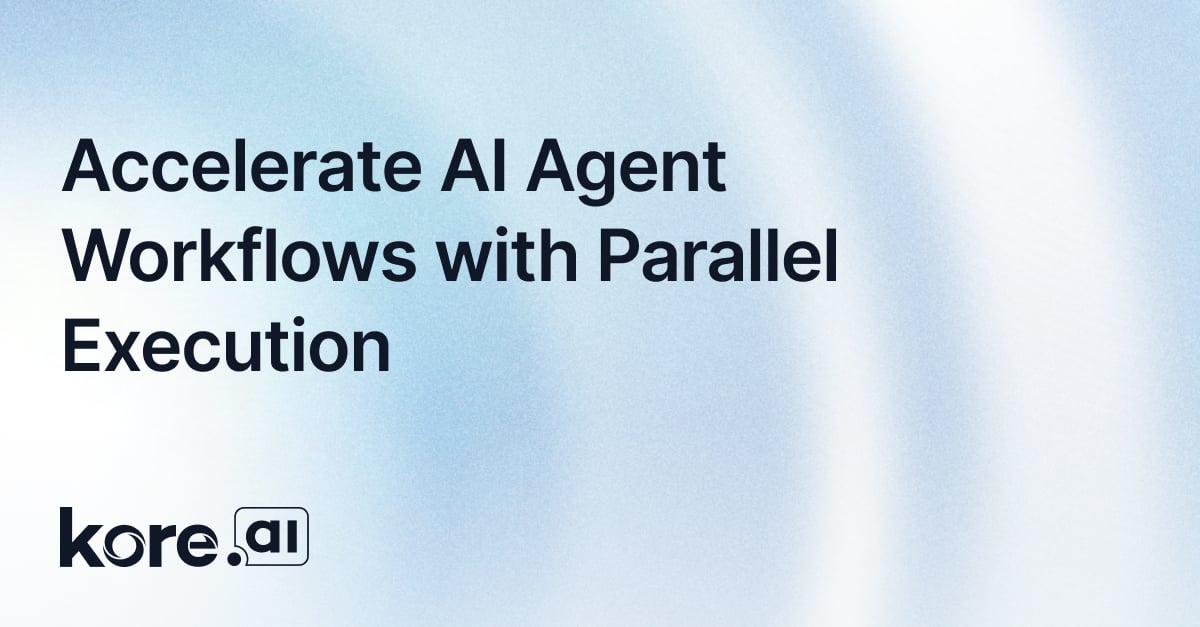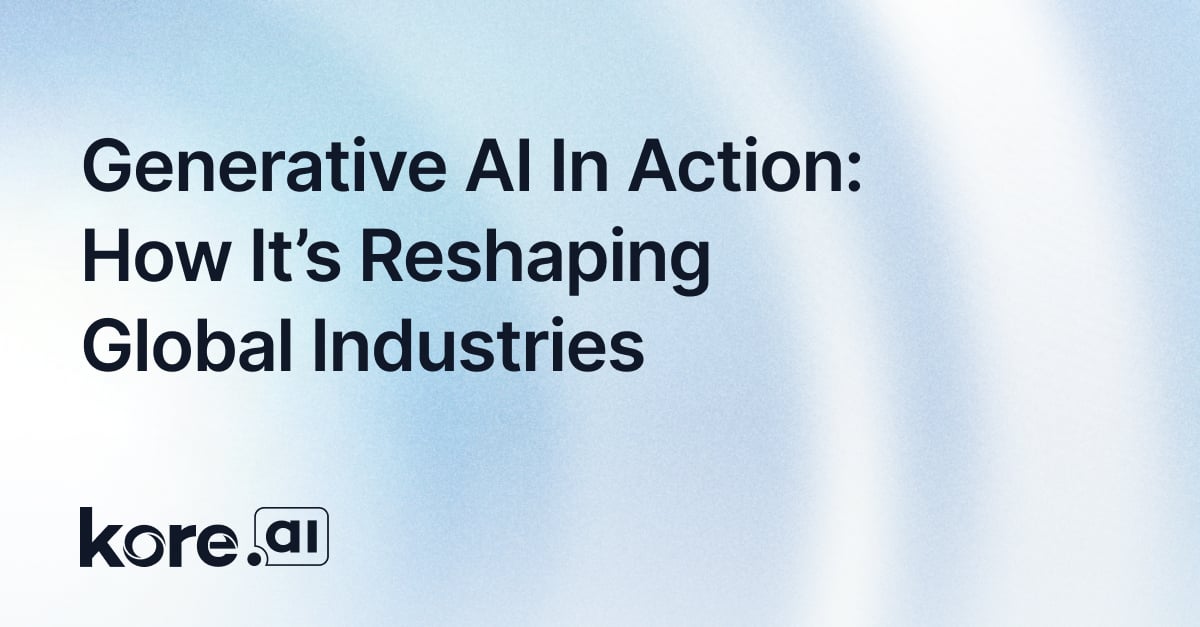Agentic AI enables autonomous planning, reasoning, and execution across enterprise workflows far beyond the reactive limits of traditional AI. This blog explores what makes Agentic AI different, how it’s reshaping enterprise operations, where it delivers the most value, and what enterprises need to consider as they scale these autonomous systems
Table of Contents [Show]
- What is Agentic AI? Are enterprises ready to scale it??
- What is the difference between Agentic AI and Generative AI?
- What Are the Core Capabilities That Make Agentic AI Work?
- How is Agentic AI helping enterprise operations?
- What are the real-world use cases of Agentic AI?
- How Does Agentic AI Work? Understanding the Levels of AI Autonomy
- How should an ideal Agentic AI system be?
- How can enterprises adopt Agentic AI?
- Closing Thoughts: Is Your Enterprise Ready for Agentic AI?
What is Agentic AI? Are enterprises ready to scale it?

What is the difference between Agentic AI and Generative AI?
At first glance, Agentic AI might seem like just the next version of Generative AI. But it’s more than that; it’s a whole new level of intelligence.
Generative AI changed how we interact with machines. It provided us with systems that could generate content, summarize documents, draft emails, create images, and facilitate conversations, with Large Language Models (LLMs) at the forefront. These models were a breakthrough. But they had limitations. They didn’t take action. They didn’t remember past interactions. They didn’t plan or make decisions. They were great at producing output but not at follow-through.
Agentic AI picks up where Generative AI left off. These systems don’t just answer your question; they figure out what needs to be done next. They understand goals, track context, plan steps, and take action across tools and workflows. In other words, they don’t just help you think; they help you get things done.
This shift redefines what AI is expected to do inside businesses. As rightly quoted by Leslie,
“The mission today isn’t just automation, it’s autonomy. You’re designing systems that can act with intent, recall, and decision-making power.”
What Are the Core Capabilities That Make Agentic AI Work?
Agentic AI isn’t just a smarter version of language models. It’s a new kind of system, one that doesn't just respond but thinks ahead, remembers, takes action, and collaborates. But how does that work? What capabilities make an AI system truly “Agentic” in the enterprise sense?
It comes down to five essential capabilities. These aren’t features of the LLM alone. They emerge when the model is part of a larger system designed for real-world execution and decision-making.
What are the five building blocks of Agentic AI?
-
Planning - Planning in Agentic AI means taking a high-level goal and figuring out the best way to achieve it. Instead of following rigid scripts, agents break down tasks, generate plans in real time, and adapt as new information comes in.
-
Reflection - Reflection gives agents the ability to evaluate their output. Can they tell when something’s off? Can they fix it? This feedback loop helps agents learn, self-correct, and handle complex or high-risk tasks more effectively.
-
Memory - Memory is what makes an agent feel consistent and reliable. It allows agents to remember context from one interaction to the next, track past decisions, and personalize how they respond. Without memory, there's no continuity and no learning.
-
Tool Use - Agentic AI doesn’t just generate responses. It takes action. That means connecting with APIs, updating records, pulling data, and completing real-world tasks across enterprise systems.
-
Multi-Agent Collaboration - A single person doesn’t handle most real-world processes, and the same goes for agents. Agentic AI systems must be able to work in teams, share context, and coordinate decisions to get complex jobs done.
Together, these five capabilities form the core of enterprise-ready Agentic AI. They move systems beyond language understanding into something more powerful, AI that can reason, act, and adapt inside real business workflows.
For a deeper dive into how these blocks drive enterprise automation, explore this guide:
A Practical Guide to Building Agentic AI for Enterprise Workflow Efficiency
How is Agentic AI helping enterprise operations?
Let’s be honest, enterprise operations have always been full of friction. Too many handoffs, too many tools, too many decisions that depend on someone remembering the right thing at the right time.
Agentic AI is starting to change that. It’s not just making processes faster. It’s changing how work gets done, who or what does it, and how much oversight is needed. When you implement Agentic AI correctly, it doesn’t replace people. It clears the path for them by handling the complexity underneath. This transformation doesn’t happen all at once. It unfolds in stages, each one pushing the system from simple support to full autonomy.
-
Augmentation: This is where most teams start. Agents act as smart assistants summarizing dense documents, retrieving data from enterprise systems, guiding users through multi-step workflows, and handling repetitive tasks. It’s low-risk, high-impact support that fits neatly into existing processes. Think of it as: automation without disruption
-
Automation: As patterns become predictable, agents start owning entire tasks. Instead of just assisting a support agent, for example, an AI agent might fully resolve common queries, trigger refunds, update records, or escalate when needed. What changes here is execution. Tasks become faster, cleaner, and more consistent because they’re being handled by something that doesn’t forget or get tired.
-
Reinvention: At this stage, enterprises stop thinking in terms of “where can we insert AI?” and start designing processes around agents. Agents become collaborators across teams, helping sync systems, manage exceptions, and enable real-time decision-making. Workflows become adaptive by design, and that leads to fewer delays, less context-switching, and faster outcomes across the board.
-
Transformation: This is where things shift. Agents are no longer just helpers; they’re operators. They don’t wait for tickets or instructions. They monitor, reason, act, and adapt on their own, across tools and workflows. We’re talking about systems that understand intent, assess risk, validate inputs, and carry out decisions in real time without needing to loop in a human every step of the way. It’s not just a more efficient version of your current model. It’s a new model entirely.
Agentic AI brings something fundamentally new to enterprise operations systems that can operate with context, make informed decisions, and move tasks forward end-to-end across tools and workflows. It creates clarity where there was friction, and momentum where there were bottlenecks. These aren’t passive assistants; they’re active participants in how work gets done, capable of handling complexity with autonomy and consistency.
What are the real-world use cases of Agentic AI?
Agentic AI is already being applied across critical enterprise workflows, bringing structure, speed, and intelligence to complex tasks.
-
In banking and financial services, AI agents are automating compliance-heavy tasks. Whether it's verifying documents during onboarding, maintaining audit trails, or ensuring policy adherence, these systems deliver both speed and transparency. Relationship managers also benefit from agents that compile contextual client briefings, so they no longer have to scramble before meetings.
-
Customer service is another domain seeing rapid adoption. Instead of passively responding to tickets, AI agents are actively guiding conversations, surfacing relevant policies, suggesting next-best actions, and even summarizing interactions. This reduces training time, enhances consistency, and lets human agents focus on empathy and resolution.
-
In procurement, agents are driving smarter, faster decisions across complex workflows. They're coordinating between systems, extracting key terms from contracts, verifying compliance, and routing approvals, helping teams move from manual tracking to intelligent orchestration.
-
When it comes to insurance claims and loan processing, agentic systems are built for the job. These use cases are goal-oriented, involve structured decision-making, and require memory. Agents here help assess risk, validate inputs, and guide the next logical steps, all while maintaining explainability.
-
Even in HR onboarding and IT support, Agentic AI is making a measurable impact. These areas are often overlooked, but they're ideal for early adoption: mid-complexity, lower-risk, and ripe for automation. Agents here help new hires get up to speed, reset credentials, provision tools, and resolve tech issues by talking directly to systems like Workday and ServiceNow.
Summary: Where does Agentic AI deliver real value?
- High-volume, compliance-driven processes
- Customer service automation with decision support
- Workflow acceleration across procurement and IT
- Early-stage HR onboarding and credential management
So, where are most enterprises on this journey?
While Agentic AI is already creating value across key functions, not every deployment looks the same. Some agents are task-specific helpers, while others operate with broader autonomy. Understanding the different levels of AI autonomy helps clarify how far your systems have come and what it’ll take to scale them further.
How Does Agentic AI Work? Understanding the Levels of AI Autonomy
AI autonomy isn’t binary; it evolves in stages. From simple task automation to intelligent decision-making, this is how Agentic AI works at different levels depending on how mature your systems are, how much control you want to retain, and what kind of business outcomes you're aiming for. Understanding these levels helps you assess where your organization stands today and what it’ll take to move forward responsibly.
What are the 5 levels of AI Autonomy?
-
Level 0: All work is done manually. No automation in place.
-
Level 1–2: Rule-based scripts or RPA systems handle specific tasks. There’s automation, but no intelligence.
-
Level 3: Semi-autonomous or “agentish” systems. They understand the intent and take actions, but only within defined boundaries and with human checks in place.
-
Level 4: Fully agentic. Systems plan, decide, and act across workflows without needing constant validation.
-
Level 5: General autonomy, AI with reasoning across domains. This is still aspirational and not enterprise-ready today.
Most enterprises today operate at Level 3, and that’s exactly where they should be. It offers the best of both worlds: automation with control, intelligence with oversight.
Knowing your current level of AI autonomy helps align investment, governance, and expectations so you scale with clarity and confidence.
How should an ideal Agentic AI system be?
An ideal Agentic AI system gives enterprises the foundation to scale from isolated pilots to real-world, production-grade systems. It enables agents to reason, plan, take action, and learn while offering control, flexibility, and visibility across every layer of deployment.
Here’s what defines a truly enterprise-ready Agentic AI system:
-
Model Flexibility and Orchestration - Supports a wide range of commercial and open-source LLMs, allowing teams to choose the right model for the job, whether based on performance, task fit, or cost. The system should make it easy to switch models without rebuilding workflows. Explore how this works.
- Prompt Management at Scale - Prompts are central to how agents behave. The system should treat prompts as reusable, testable assets, enabling teams to version, govern, and share them across agents. This reduces engineering overhead and ensures consistency.
See Prompt Studio in action. - Memory Architecture - The system should support multi-layered memory to help agents retain context and adapt over time:
- Short-term memory for in-session awareness
- Episodic memory for decision tracking across sessions
- Semantic memory for long-term facts using embeddings
This enables agents to maintain continuity, adapt over time, and personalize interactions.
- Multi-Agent Orchestration - Complex tasks are rarely solved by a single agent. An ideal system should support multi-agent orchestration, where specialized AI Agents handle different responsibilities, and a central orchestrator ensures they work together seamlessly. This division of labor boosts accuracy, simplifies troubleshooting, and makes it far easier to scale and adapt workflows over time.Get more Information
(Ref: Kore.ai Agent Platform - Multi Agent Orchestration)
- Built-in Evaluation and Feedback Framework - Before going live, agents should be evaluated using defined success criteria, covering both correctness and behavior. Post-deployment, the platform should enable continuous monitoring, real-time feedback, and performance tuning. Learn how Evaluation Studio supports this.
(Ref: Kore.ai Agent Platform - Observability)
- Cost Monitoring and Optimization - The system should offer visibility into token-level usage across models, prompts, and agents, helping teams identify cost drivers and optimize spend. For example, enterprises can replace general-purpose models with smaller task-specific ones where appropriate.
Together, these capabilities enable modular, governed, and cost-efficient deployment of Agentic AI across real enterprise environments, turning AI systems into reliable, scalable digital teammates.
How can enterprises adopt Agentic AI?
The best place to start is with goal-oriented, mid-complexity processes where intelligent autonomy can deliver measurable business value. Instead of building general-purpose agents, focus on domain-specific use cases that align tightly with your operational priorities, whether it’s compliance workflows, customer support, or procurement.
From day one, embed evaluation mechanisms into your development cycle. Set up clear governance frameworks that prioritize explainability, accountability, and human oversight. Architect your agentic systems using a modular approach so they can scale and evolve without becoming brittle.
Most importantly, remember this: Agentic AI isn’t a fixed tool; it’s a progression. It adapts as your enterprise matures, unlocking new levels of decision-making and automation along the way. To scale responsibly, four foundational pillars must guide every deployment.
- Data governance – Ensure high-quality, compliant data is used to train and inform AI agents
- Human oversight – Keep people in the loop for critical decisions
- Traceable verification – Maintain auditability of AI-driven actions
- Intentional architecture – Design for extensibility, not just immediate outcomes
These principles help close the gap between experimentation and enterprise-wide execution, making your Agentic AI journey both powerful and sustainable.
Read further to understand the best practices before adopting Agentic AI -
Closing thoughts: Is Your Enterprise Ready for Agentic AI?
Agentic AI is already being applied across industries. The difference between experimentation and meaningful results comes down to one factor: Execution.
This is not about replacing people. It’s about enabling systems that can operate with context, memory, and autonomy reliably and at scale. As enterprises move forward, three questions matter:
- Are your current systems making decisions with real context and clarity?
- Are workflows still static, or adapting to real-time business changes?
- Are your AI initiatives driving operational value or just sitting in silos?
Agentic AI is not just another step in digital transformation. It’s a shift in how intelligence is applied across the enterprise. And now is the moment to build it with intent.
Want to learn more about how to build and scale agentic systems for your enterprise?
Watch the expert guidance or visit Kore.ai.
FAQs
-
What is Agentic AI, and how is it different from traditional AI?
Ans. Agentic AI is an advanced form of artificial intelligence that goes beyond rule-following or basic response generation. It can independently understand goals, make decisions, plan multi-step tasks, and take action across systems without needing constant input. Unlike traditional AI, which waits for commands, Agentic AI proactively identifies what needs to be done and executes it, making it ideal for complex, enterprise-scale workflows. -
Why is Agentic AI important for modern businesses?
Ans. Modern businesses face growing complexity, fragmented tools, disconnected teams, and higher customer expectations. Agentic AI helps by intelligently automating cross-functional tasks, reducing manual work, speeding up decisions, and freeing teams to focus on strategic priorities. For competitive industries, this shift brings agility, efficiency, and sharper execution. -
How does Agentic AI improve customer experience?
Ans. Agentic AI improves CX by doing more than just responding. It understands the request, retrieves data, applies business logic, and completes actions like refunds, updates, or scheduling, all in real time. This means faster resolutions, fewer handoffs, and personalized support that feels seamless to the customer. -
What are the top use cases for Agentic AI in enterprises?
Ans. Agentic AI shines in mid-to-high complexity workflows across IT, HR, finance, procurement, and customer service. Examples include resolving tech issues, automating onboarding, processing insurance or loan claims, contract validation, or assisting human agents in real time. These agents reason through tasks, use tools, and collaborate, reducing the load on teams. -
How can enterprises ensure Agentic AI is safe and trustworthy?
Ans. Trust in autonomous AI starts with control. Leading platforms offer governance features like task-level approvals, RBAC-based restrictions, decision logging, and real-time monitoring. Businesses can define clear policies for where agents can act independently and where human oversight is required, ensuring both safety and accountability.











